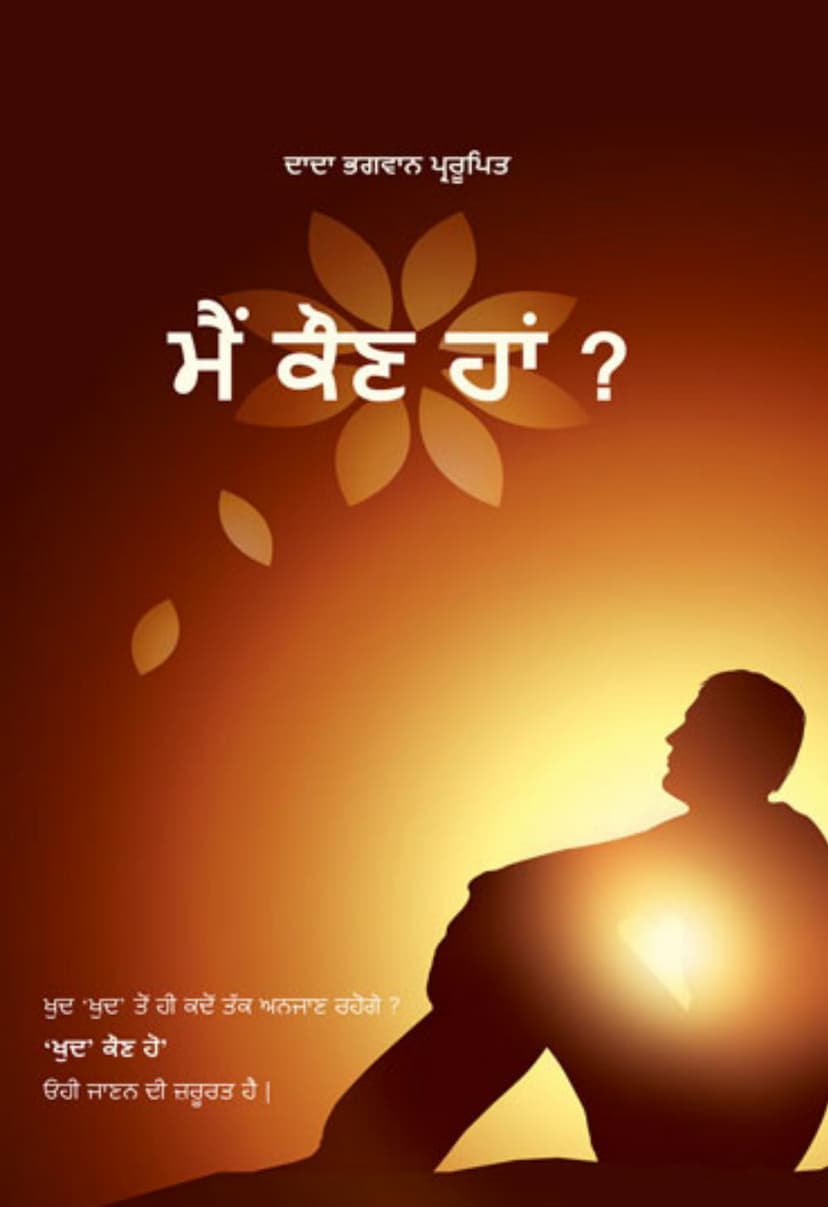Main Kaun Hoo
Added to library: September 2, 2025

Summary
Here's a comprehensive summary of the Jain text "Main Kaun Hoon" (Who Am I?) by Dada Bhagwan, based on the provided pages:
Title: Main Kaun Hoon (Who Am I?) Author: Dada Bhagwan (Spiritually realized being, also known as Shree Ambalal M. Patel) Publisher: Dada Bhagwan Aradhana Trust Core Theme: The book is a spiritual discourse focused on self-realization, exploring the fundamental question of "Who am I?" and guiding seekers towards understanding their true self (the Soul) and its separation from the non-self.
Key Concepts and Teachings:
-
The Nature of the Self (The Soul):
- The central message revolves around the realization that "I am the Soul." The book emphasizes that we are not our name, body, relationships, profession, or any of the temporary labels and possessions we identify with.
- The concept of "I" versus "My" is explored. "My" refers to the possessive aspect (body, mind, intellect, belongings, relationships), which are all transient and external. The true "I" is the Soul, the eternal and unchanging essence within.
- Separating "I" and "My": A significant part of the teaching involves a practical exercise of separating the "I" from "My." This is a process of dis-identification from all that is external and temporary, much like separating cream from milk. This separation leads to the realization of the pure Soul.
-
The Role of Beliefs and Illusions:
- The book identifies numerous "wrong beliefs" (galat/rong beliefs) that bind us to the cycle of suffering. These include identifying with one's name ("I am Chandulal"), relationships ("I am the husband of this woman"), possessions, profession, and even physical attributes like age or color.
- These beliefs create an ego (hankar) and are considered a false overlay on our true nature. The goal is to shed these false identifications.
-
The "Akram Marg" (Un-caused Path):
- Dada Bhagwan presents an "Akram Marg" or "Accidental Path," which is described as a shortcut or a "lift" path to self-realization, as opposed to the gradual, step-by-step "Kram Marg" (gradual path) of traditional spiritual practices.
- This path offers a direct experience of the Self. It is stated that this knowledge can be attained very quickly, even within hours, through a specific process facilitated by a Gnani Purush (a fully enlightened being).
-
The Gnani Purush (The Enlightened Being):
- The book emphasizes the crucial role of a Gnani Purush in guiding one to self-realization. A Gnani Purush is someone who has fully realized their true Self and can, in turn, grant this realization to others.
- Dada Bhagwan explains his own realization and the manifestation of "Dada Bhagwan" within him. He clarifies that the physical body is not Dada Bhagwan, but the inner divine consciousness is. He humbly bows to the "Dada Bhagwan" within.
- The characteristics of a Gnani Purush are described: they are free from ego and attachment, their words are scripture, their behavior is virtuous and attractive, and they possess profound, inherent knowledge.
-
The Nature of Karma and Causation:
- The concept of "Scientific Circumstantial Evidence" is introduced, suggesting that everything that happens in the world is governed by a complex interplay of causes and conditions, rather than a single creator.
- It's explained that we are not the doer (karta) of our actions in the ultimate sense. The feeling of "I am the doer" is an illusion that creates karma. When this illusion is removed, karma ceases to bind.
- The teachings emphasize that when one is in the state of the Self (as the Soul), they are not the doer, nor the enjoyer, of actions.
-
Moksha (Liberation):
- Moksha is defined not just as liberation after death, but as liberation in this very life while living amidst worldly responsibilities.
- The primary goal is to attain the state of "pure Soul" and live in continuous self-awareness, free from worldly suffering and the binding of new karma.
- The book stresses that Moksha is not something to be achieved through strenuous effort or penance, but through the knowledge of the Self and the guidance of a Gnani Purush.
-
The Five Instructions (Aagya):
- After receiving the knowledge of the Self, five specific instructions (Aagya) are given to help the seeker remain in the state of the Self and prevent new karma. These are practical guidelines for daily living.
- Following these instructions is presented as the path to lasting peace and spiritual progress.
-
The Role of Simandhar Swami:
- The text also mentions Lord Simandhar Swami as the current Tirthankar (spiritual teacher) in Mahavideh Kshetra. Devotees are encouraged to meditate on Him, as He is a living Tirthankar and the chanting of the Navkar mantra is considered most potent when focused on Him.
Overall Purpose:
"Main Kaun Hoon" aims to provide a direct path to spiritual awakening. It liberates individuals from the illusion of the ego and the burden of karma by revealing their true nature as the pure, eternal Soul. The book offers a scientific and practical approach to spirituality, emphasizing the importance of a living Gnani Purush and the transformative power of self-knowledge. The core message is that understanding "Who am I?" is the key to solving all of life's problems and achieving ultimate liberation.